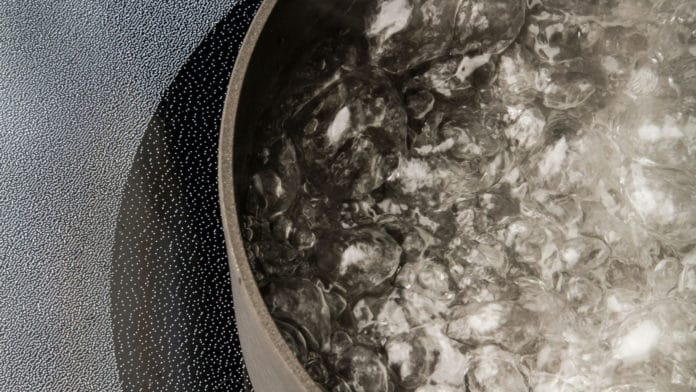Boiling is an effective energy-transfer process with substantial utility in energy applications. Systems that heat and evaporate water could consume much less energy if they were more efficient. With the aid of a carefully designed surface treatment for the materials utilized in these systems, MIT researchers have now discovered a technique to do precisely that.
Engineers used a combination of three different kinds of surface modifications at different size scales. Boiling heat transfer is mainly evaluated by critical heat flux (CHF) and heat transfer coefficient (HTC).
Anything that enhances one of these criteria tends to make the other worse in materials design since there is typically a tradeoff between the two. However, both are crucial for the system’s effectiveness. After years of work, the team has discovered a technique to improve both characteristics simultaneously, thanks to their mix of various textures applied to a material’s surface.
MIT graduate Youngsup Song Ph.D. ’21 said, “Both parameters are important, but enhancing both parameters together is tricky because they have an intrinsic tradeoff. The reason is that if we have lots of bubbles on the boiling surface, that means boiling is very efficient. Still, if we have too many bubbles on the surface, they can coalesce together, forming a vapor film over the boiling surface.”
“That film introduces resistance to the heat transfer from the hot surface to the water. If we have vapor between the surface and water, that prevents the heat transfer efficiency and lowers the CHF value.”
Most of the components of this new surface treatment have been studied already, yet this new work is the first to show that these methods could be combined to overcome the tradeoff between the two competing parameters.
The formation of bubbles on a surface can be controlled by adding several microscale cavities or dents. This effectively pins the bubbles to the locations of the dents and prevents them from spreading out into a heat-resistant coating. To avoid film development, the engineers in this study fabricated a series of dents, each 10 micrometers wide and separated by roughly 2 millimeters.
However, that separation also reduces the bubble concentration at the surface, which may decrease boiling efficiency. To make up for it, the scientists applied a surface treatment at a much smaller scale, producing minute bumps and ridges at the nanometer scale, increasing the surface area and accelerating the rate of evaporation beneath the bubbles.
In the experiments, scientists created cavities in the centers of a series of pillars on the material’s surface. These pillars, combined with nanostructures, promote the wicking of liquid from the base to their tops, enhancing the boiling process by providing more surface area exposed to the water.
Song said, “In combination, the three “tiers” of the surface texture — the cavity separation, the posts, and the nanoscale texturing — provide a greatly enhanced efficiency for the boiling process.”
“Those micro cavities define the position where bubbles come up. But by separating those cavities by 2 millimeters, we separate the bubbles and minimize the coalescence of bubbles.”
“Although their work has confirmed that the combination of these kinds of surface treatments can work and achieve the desired effects, this work was done under small-scale laboratory conditions that could not easily be scaled up to practical devices. These structures we’re making are not meant to be scaled in their current form but were used to prove that such a system can work. One next step will be to find alternative ways of creating these kinds of surface textures so these methods could more easily be scaled up to practical dimensions.”
“Showing that we can control the surface in this way to get enhancement is the first step. Then the next step is to think about more scalable approaches.”
Wang said, “There may be some significant small-scale applications that could use this process in its present form, such as the thermal management of electronic devices, an area that is becoming more important as semiconductor devices get smaller and managing their heat output becomes ever more important.”
“There’s a space there where this is important.”
Journal Reference:
- Youngsup Song et al. Three-Tier Hierarchical Structures for Extreme Pool Boiling Heat Transfer Performance. 20 June 2022; Advanced Materials. DOI: 10.1002/adma.202200899
